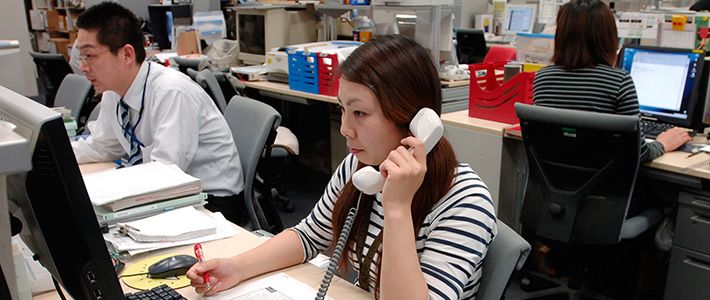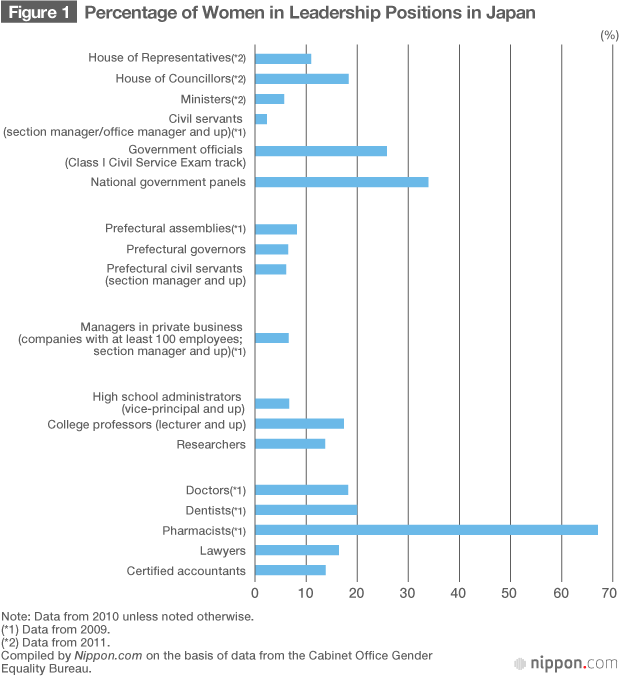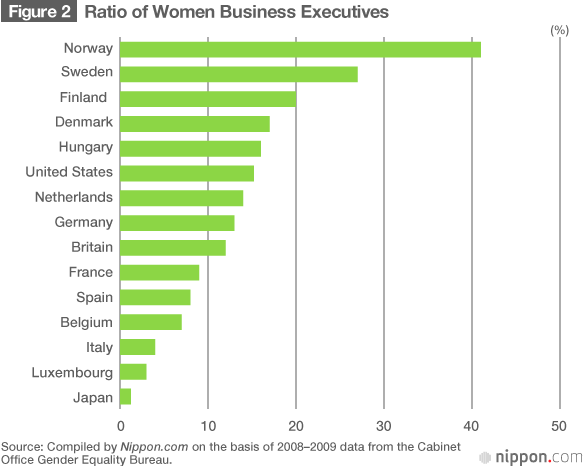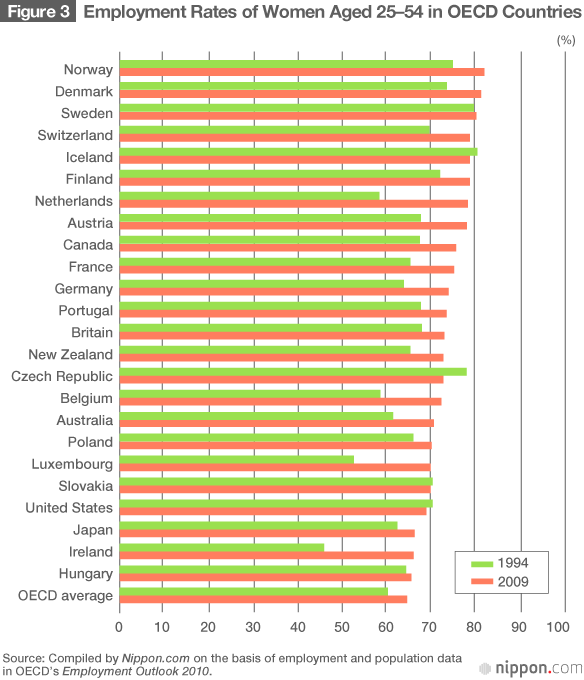
Can “Womenomics” Save the Japanese Economy?
Politics Economy- English
- 日本語
- 简体字
- 繁體字
- Français
- Español
- العربية
- Русский
The government of Prime Minister Abe Shinzō has drawn widespread attention with its plan for promoting greater participation by women in the labor force as a key component of its economic growth strategy. Dubbed “womenomics,” Abe's policies look to reinvigorate Japan’s flagging economy by unleashing the under-utilized potential of the country’s female population. Many experts believe that boosting participation by women is essential if Japan is to reverse the sharp decline in the labor force caused by an aging and shrinking population.
More Women in Leadership Roles
In June 2014, the government updated its economic growth strategy to include policies promoting a greater role for women in the labor force. Under the new plan, the government aims to raise the employment rate for women in the 25–44 age bracket from the 2012 level of 68% to 73% and increase the ratio of corporate leadership positions occupied by women to 30% by 2020.
Prime Minister Abe has repeatedly affirmed his commitment to empowering women. In January 2014, at the World Economic Forum in Davos, Switzerland, Abe stated, “Japan must become a place where women shine.” He reiterated this sentiment at the World Assembly for Women in Tokyo in September, and again that month when addressing the UN General Assembly, where he announced that Japan had implemented over half of the ¥300 billion contribution it had pledged the previous year to advance the status of women. But formidable social and economic barriers stand in the way of the government's domestic targets. Abe will need to take bold steps to ensure that real opportunities are opened to women.
One major issue is access to daycare. The government has pledged to increase the number of daycare facilities to accommodate an additional 400,000 children by 2017, including 200,000 by 2015. It has also announced a subsidy for companies to create in-house daycare centers. In addition, major companies are being asked to disclose gender-based information, such as the number of women employed in leadership and managerial positions.
Greater Representation in Government
Keidanren, Japan’s biggest business lobby, has been quick to respond to the government's policy, calling on member companies to draw up action plans for achieving key objectives, such as promoting women to leadership positions. Meanwhile, the government has taken steps to lead by example, increasing the number of female civil servants and releasing plans to actively appoint women to executive positions in government agencies.

The government has remained true to its commitment over the last two years, increasing the number of females in cabinet posts and other high-level offices. Still, while appointments of women to key government positions are occurring more regularly, some maintain that the front-page coverage such events still receive is evidence of how far Japan lags behind the rest of the industrialized world.

Japan’s Tangible Gender Gap
Japan's Equal Employment Opportunity Act, designed to ensure gender equality in the workplace, came into force in 1986. While the law and its two subsequent revisions have led to some fundamental improvements, workforce inequalities remain. The government also moved to address social equality with the Basic Act for Gender-Equal Society of 1999. Two years later, in 2001, the Gender Equality Bureau was established within the Cabinet Office and tasked with planning and coordinating policies promoting social equality for women.
While these and other measures have increased employment opportunities for Japanese women, Japan's gender gap remains striking, with levels of labor-force participation far below those in most industrially advanced nations. Even within Asia, Japan lags behind many of its neighbors when it comes to appointing women to leadership positions in the private sector.
In recent years, International Monetary Fund chief Christine Lagarde has been a major catalyst for the expansion of opportunities for Japanese women. At the annual IMF and World Bank meeting in Tokyo in October 2012, Lagarde stressed the essential role Japan’s pool of well-educated women can play as a force for growth, a point she reiterated at the World Assembly for Women last September. According to the Gender Equality Bureau’s 2012 White Paper on Gender Equality, total employee remunerations would increase ¥7 trillion, or 1.5% of GDP, if Japan fully utilized the country’s 3.4 million eligible female workers.

Gender Equality in Japan
Despite the progress Japan has made in opening up opportunities for women, its relative performance in many key indicators of gender equality has actually worsened. It ranked an abysmal 105 out of 136 countries in the World Economic Forum’s 2013 Global Gender Gap Report, dropping four places from the previous year. This poor showing is attributed to the country’s low score on key indicators relating to women’s education, economic participation, and political empowerment.
It will require concerted public and private effort for Japan to close its gender gap and raise female participation in the labor force to a level on a par with other Group of Seven countries. The government must implement policies that empower women, and the nation must begin to embrace new social values, breaking away from traditional views on gender roles. The road ahead is steep, but Japan can no longer afford to allow the potential of its women to lie fallow.
(Banner photo: © Jiji Press.)
labor gender women Abenomics womenomics government of Abe Shinzō social participation Ministry of Health and Welfare economic growth strategy gender gap women’s empowerment